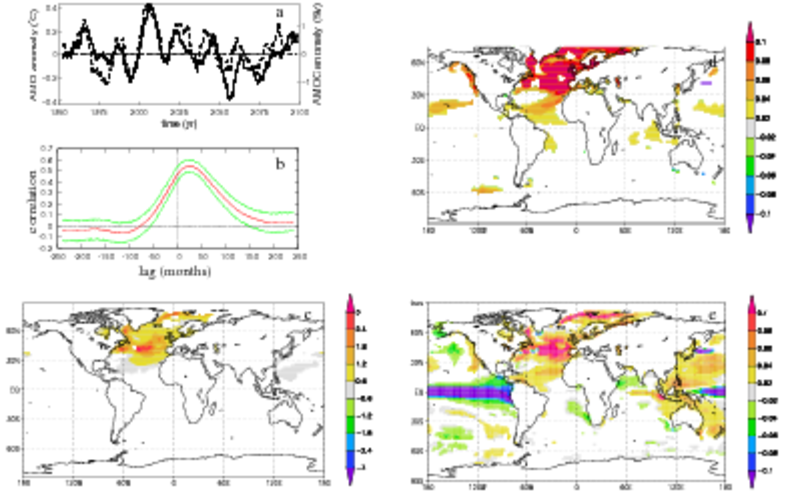
Using the ECHAM5/MPI-OM model, we study the relation between the variations in the Atlantic meridional overturning circulation (AMOC) and both the Pacific sea surface temperature (SST) and the El Niño-Southern Oscillation (ENSO) amplitude. In a 17-member 20C3M/SRES-A1b ensemble for 1950-2100 the Pacific response to AMOC variations associated with the Atlantic Multidecadal Oscillation (AMO) is very small. In a 5-member hosing ensemble where the AMOC collapses due to a large freshwater anomaly, the Pacific response is large and in correspondence with previous work. Our results show that the connection between AMOC and ENSO depends very strongly on the frequency and/or the amplitude of the AMOC variations. Interannual AMOC variations, decadal AMOC variations and an AMOC collapse are associated with entirely different responses in the Pacific Ocean.
GJ van Oldenborgh, LA te Raa, HA Dijkstra, SY Philip. Frequency- or amplitude-dependent effects of the Atlantic meridional overturning on the tropical Pacific Ocean
Status: published, Journal: Ocean Science, Volume: 5, Year: 2009, First page: 293, Last page: 301, doi: 10.5194/os-5-293-2009